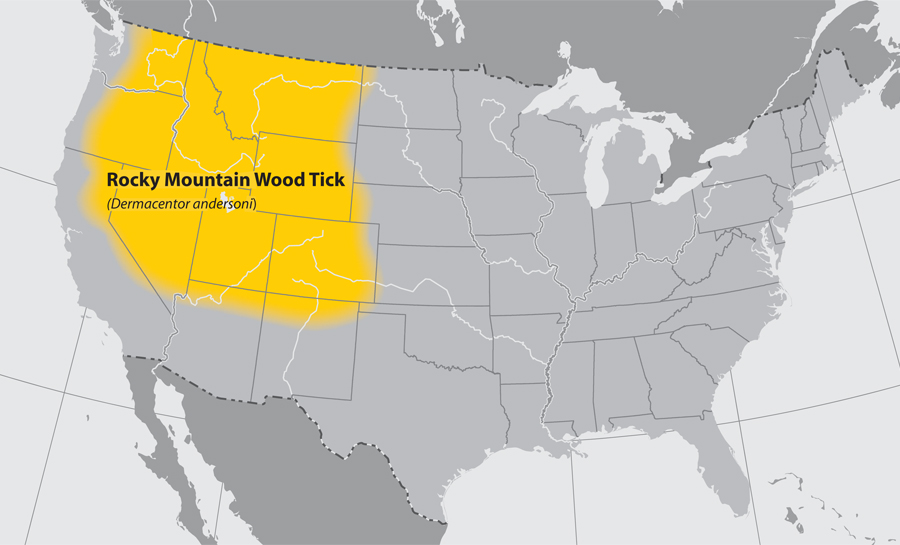Diagnosis
Types of Ticks
Ticks are found in all 50 states and in urban and rural areas. Different types of ticks carry different diseases that impact human health. These maps provide a general breakdown of the major tick types in the United States and the regions where they are located. Note: These maps serve as a guideline, and populations of tick species may exist outside the highlighted areas.
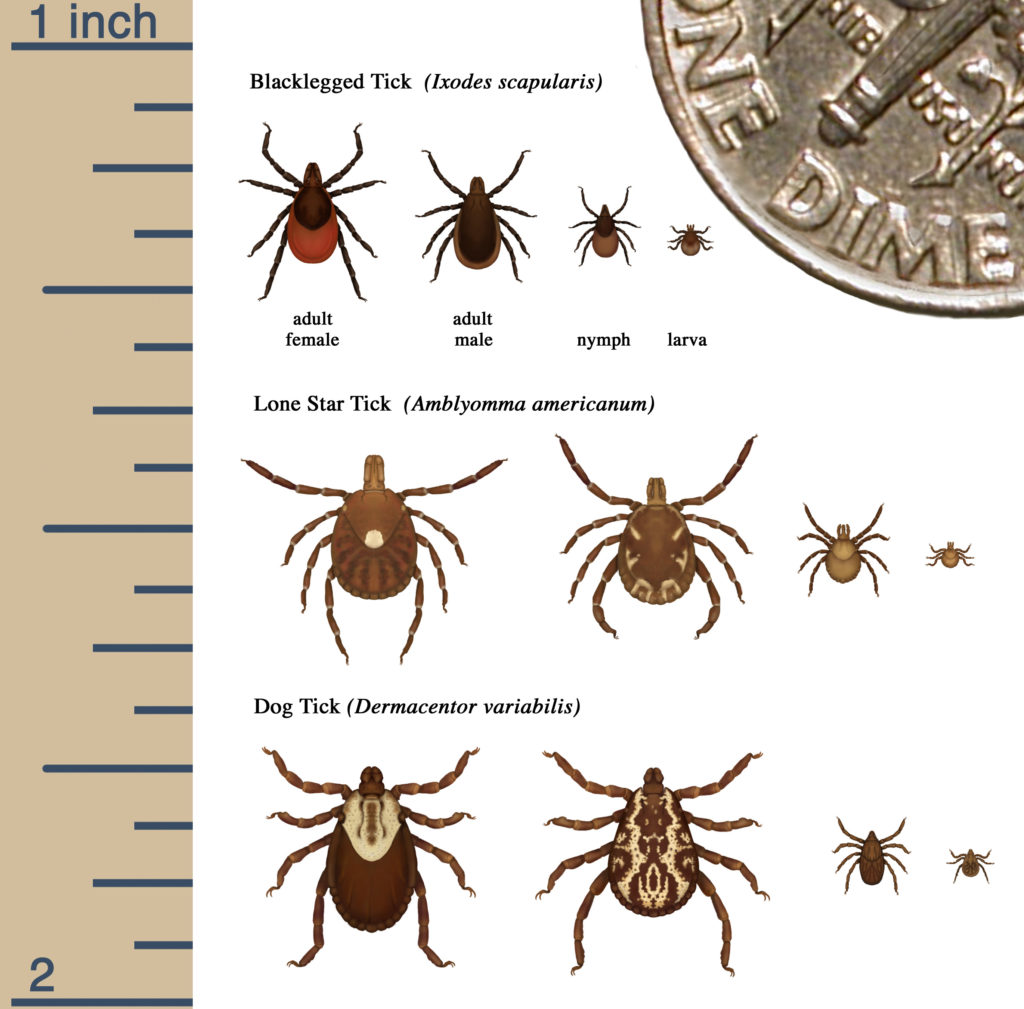

American Dog Tick (Dermacentor variabilis)
Description: American dog ticks, sometimes called wood ticks, are brown or reddish-brown. The females are most easily identified due to an off-white shield (scutum) on their backs, which contrasts with their dark bodies.
Location: They’re widely dispersed east of the Rocky Mountains and in some areas along the West Coast.
Diseases: Rocky Mountain spotted fever and tularemia
Habitat: Areas with little to no tree covering, tall grass, fields, low-lying brush, and twigs
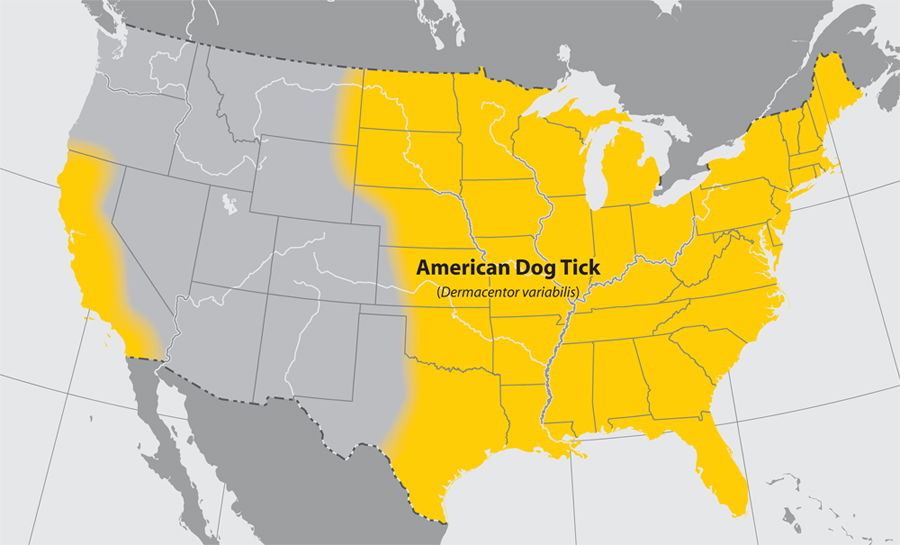
Blacklegged Tick (Ixodes scapularis)
Description: Also referred to as deer ticks, blacklegged ticks display an orange-red body, a black shield, and black legs.
Location: The blacklegged tick population has grown throughout the United States. The prime concentrations of them occur throughout the East Coast, Midwest, and the South, but they can be found along the West Coast as well.
Diseases: Lyme disease, babesiosis, tick-borne relapsing fever, ehrlichiosis, anaplasmosis, Powassan virus, and may be an agent of transmission for bartonellosis
Habitat: Thrives in many conditions and is often found in wooded and grassy areas with a variety of animals to feed on, especially white-tailed deer
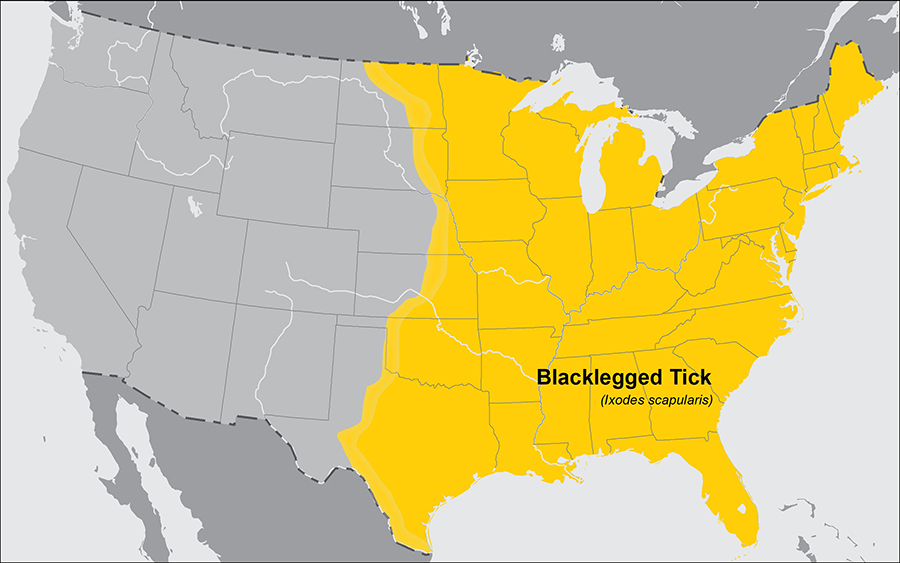
Groundhog Tick (Ixodes cookei)
Description: Also known as a woodchuck tick, groundhog ticks are light tan, and females have lozenge-shaped, brown shields on their backs. They are about the size of a sesame seed, making them similar in appearance to deer ticks, but they don’t carry Lyme disease.
Location: The groundhog tick is primarily found in the Eastern portion of the United States.
Diseases: Powassan virus
Habitat: Subtropical climates and dens of small animals, like groundhogs, skunks, raccoons, squirrels, and foxes
Lone Star Tick (Amblyomma americanum)
Description: The lone star tick is one of the most aggressive tick types in the United States. It may also be referred to as the northeastern water tick or turkey tick. Both the male and the female ticks are dark brown, but the adult female has a white dot (or lone star) on the back.
Location: Lone star ticks are found in the Southeast, Eastern, and South Central parts of the country. In recent years, they have also been found in the Northeast.
Diseases: Ehrlichiosis, human monocytotropic ehrlichiosis (HME), Rocky Mountain spotted fever, rickettsiosis, tularemia, Heartland virus, Bourbon virus, Q fever, tick paralysis, STARI (Southern tick-associated rash illness), potentially Lyme disease, other borrelia strains, and alpha-gal (meat allergy)
Habitat: Forests, heavily wooded areas, and areas with thick undergrowth
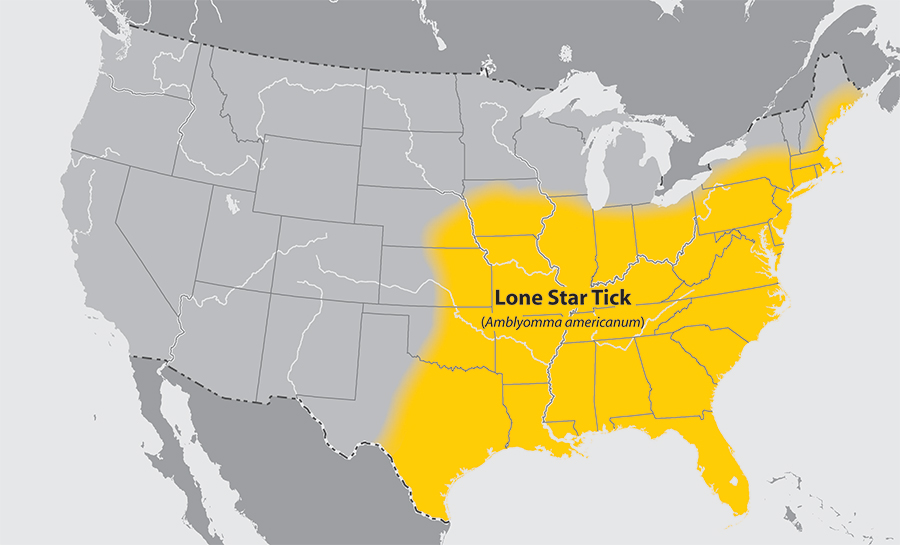
Pacific Coast Tick (Dermacentor occidentalis)
Description: The Pacific Coast tick is a dark, spotty black-brown color.
Location: The Pacific Coast tick is found throughout California and the Pacific Coast, stretching from the trails of Oregon to northern Baja California and Mexico.
Diseases: Rocky Mountain spotted fever, tularemia, Colorado tick fever, and Pacific Coast tick fever
Habitat: Hiking trails, vegetation with shrubs, grass, herbs, and plants with underground buds (geophytes)
Rocky Mountain Wood Tick(Dermacentor andersoni)
Description: The Rocky Mountain wood tick is reddish-brown like an American dog tick, but it’s slightly larger in size and shape. Females have silver-gray shields on their backs.
Location: They are typically found in the Rocky Mountain states and Southwestern Canada at higher elevations of 4,000 to 10,500 feet.
Diseases: Rocky Mountain spotted fever, Colorado tick fever, tularemia, tick paralysis
Habitat: Along trails, lightly-wooded areas, grasslands, and shrublands
